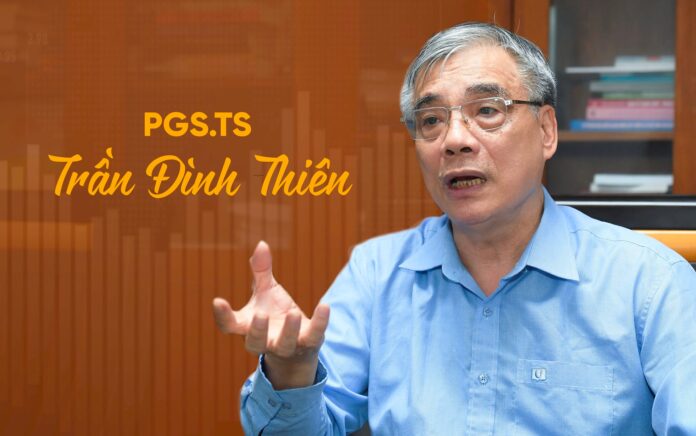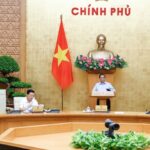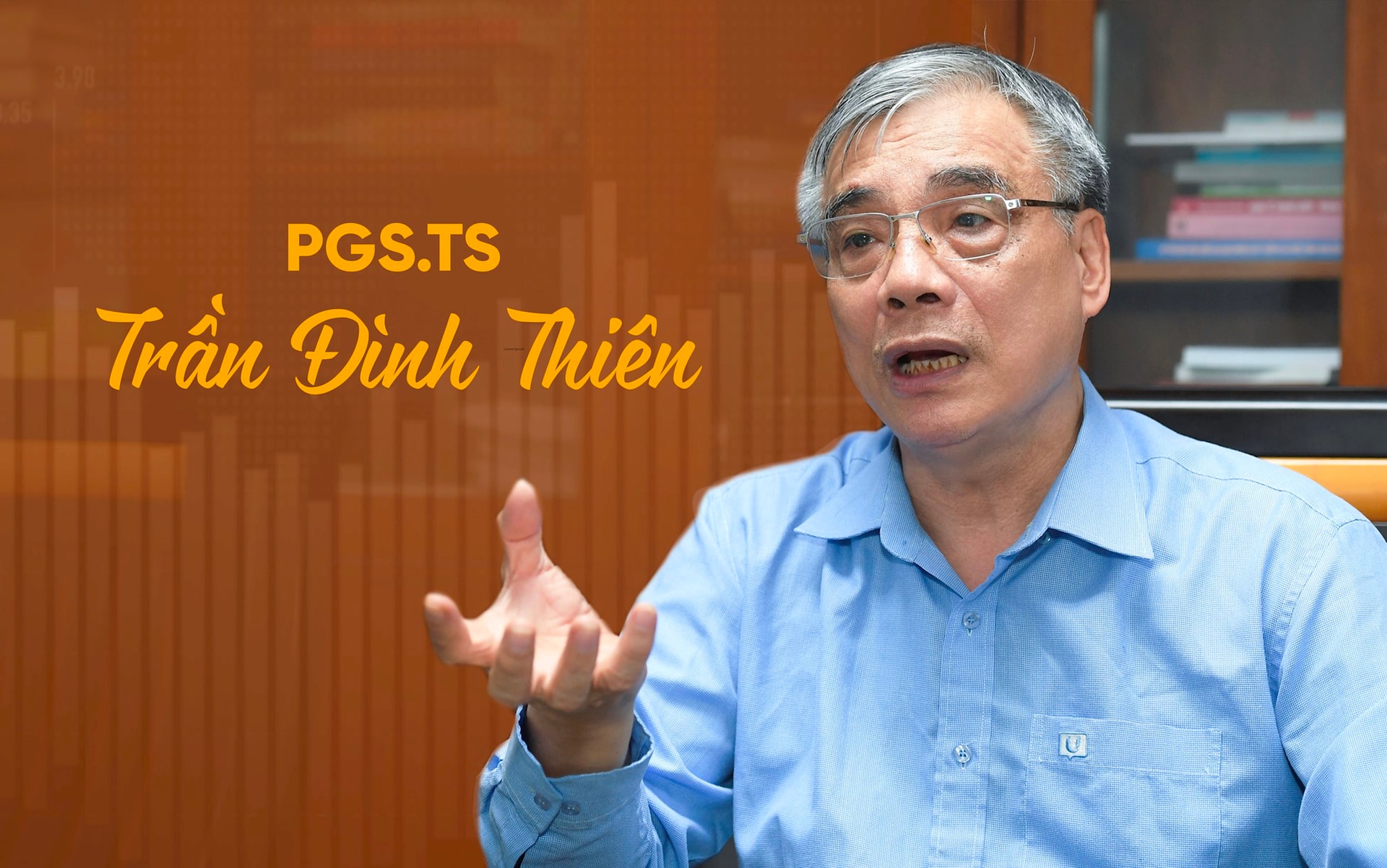

In the context of a rapidly evolving global economy, localities that dare to embrace their uniqueness, chart a different path, and boldly experiment with new development models are emerging as beacons of success.
PGS.TS Tran Dinh Thien, a member of the Prime Minister’s Policy Advisory Council, asserts that the decisive factor for a breakthrough lies not only in natural resources or geographical location but in innovative thinking and the ability to design a “flexible institutional space,” also known as a sandbox, to test, adjust, and refine development models suited to each locality.
According to Mr. Thien, the disparity between regions increasingly depends on how provinces approach and operate within the institutional framework rather than on “God-given” conditions. For many years, numerous localities have followed the “well-trodden path” of relying on traditional advantages such as natural resources or simple investment attraction models. However, he questions, “If we continue to depend on old strengths, how could any agricultural province have become rich in 4,000 years?”
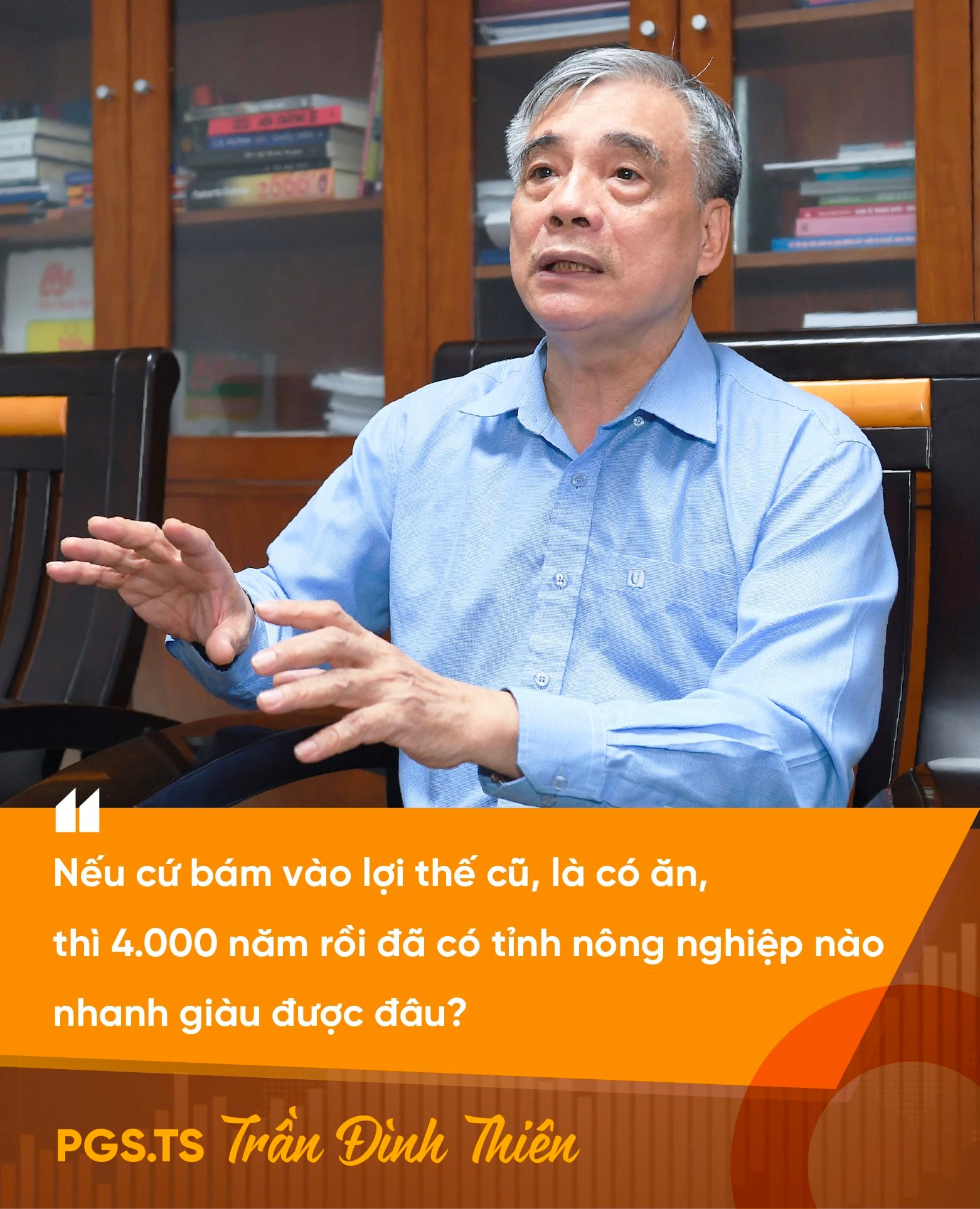
Consequently, some regions with favorable natural conditions lag, while others surge ahead from a disadvantaged position. Institutional thinking entails not just a legal framework but also the ability to choose a suitable development strategy and harness internal strengths. “The local government that takes the initiative, chooses a unique model, dares to lead, and perseveres will achieve a breakthrough,” he emphasizes.

In recent years, Binh Duong has emerged as a model locality, not only leading in industrialization but also pioneering the transition to a new, smart, green, and technology-intensive development model.
“Binh Duong doesn’t need to compete with anyone. Binh Duong only needs to compete with the world,” asserts PGS.TS Tran Dinh Thien.
From VSIP 1, which laid the foundation for FDI attraction in the late 1990s, to VSIP 2, which expanded its scale and upgraded its infrastructure, and now to VSIP 3, which focuses on green industry and renewable energy, each phase marks a technological advancement. Projects like the Lego factory complex and the rooftop solar model in industrial parks are not just symbolic but also reflect a mindset of raising standards with each “generation of industrial parks.”
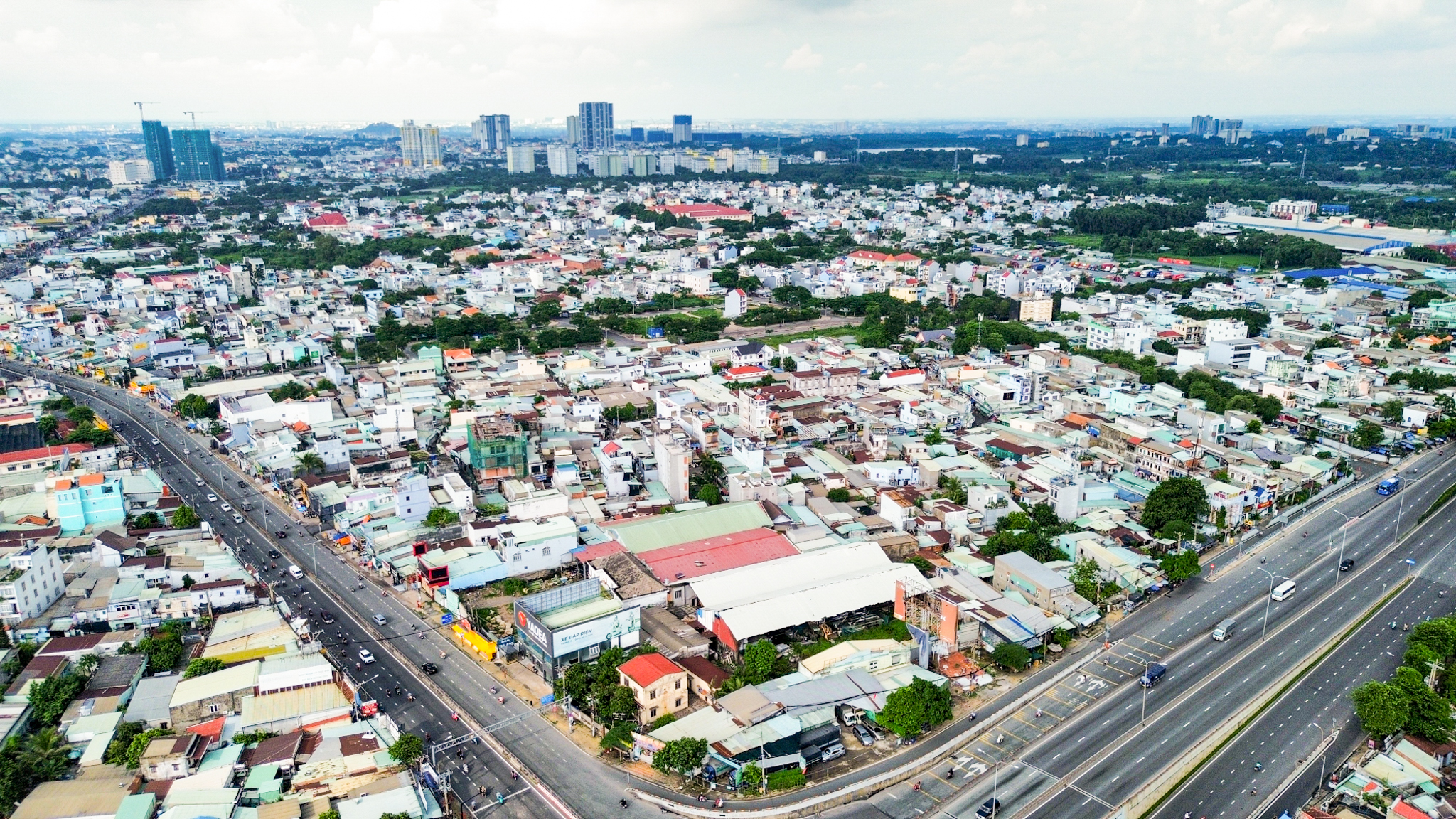
Binh Duong’s strategy goes beyond mere industrial development, aiming to build a smart urban, industrial, and service ecosystem. It is the only Vietnamese representative to consistently rank among the Top 7 Smart and Creative Cities globally by the Intelligent Community Forum (ICF).
In the past two years, Binh Duong’s GDP per capita and average income have been among the highest in the country. This success stems not from waiting for a perfect mechanism but from proactively proposing new models, thereby creating sustainable competitive advantages.
While Binh Duong exemplifies leading the way, Ninh Thuan tells a story of surging ahead from a disadvantaged position, transforming itself into a hub for renewable energy and strategic logistics.
“Ninh Thuan is one of the most challenging places for traditional agriculture due to its sandy soil, strong winds, scorching sun, scarce rainfall, rocks, and saltwater,” observes PGS.TS Tran Dinh Thien.
However, the province has turned these challenges into unique opportunities by focusing on renewable energy development. Solar and wind power projects have thrived, taking full advantage of the arid climate, strong winds, and readily available land – factors that enable the province to rapidly deploy energy projects without conflicting with agricultural production.
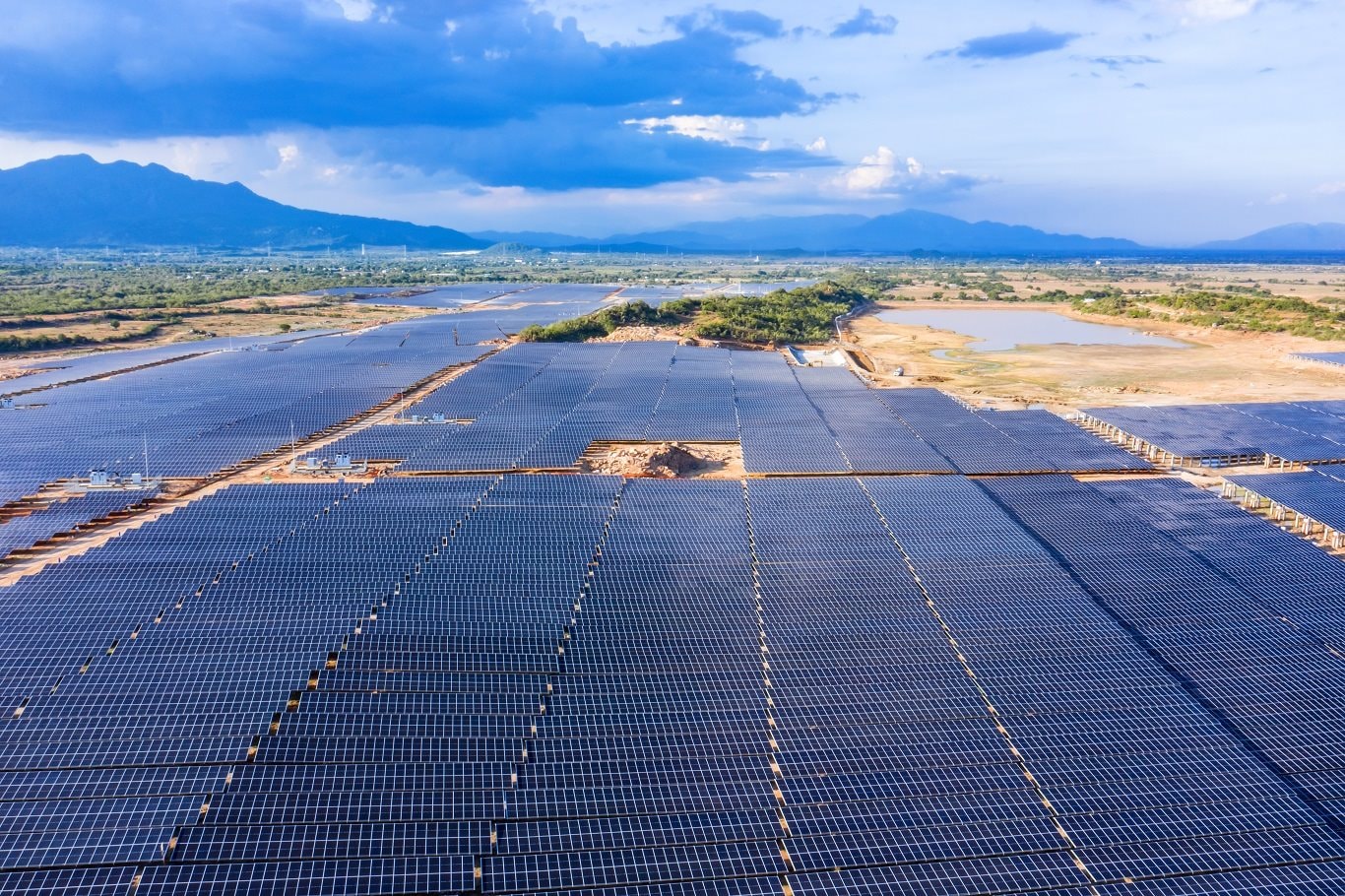
Ninh Thuan’s coastal areas also hold significant potential for offshore wind and hydrogen power due to strong and stable winds year-round. “The first and most important step for the province is to courageously choose a new direction, which forms the foundation for today’s success,” says Mr. Thien.
Recently, the province attracted attention by announcing the restart of the nuclear power project. Notably, just a day after the announcement, the General Secretary visited the site for inspection. “When Ninh Thuan announced the restart of the nuclear power project, the General Secretary visited the site the very next day, and there were no objections. This shows that when policies meet practical needs, concerns and public anxiety dissipate,” he shares.
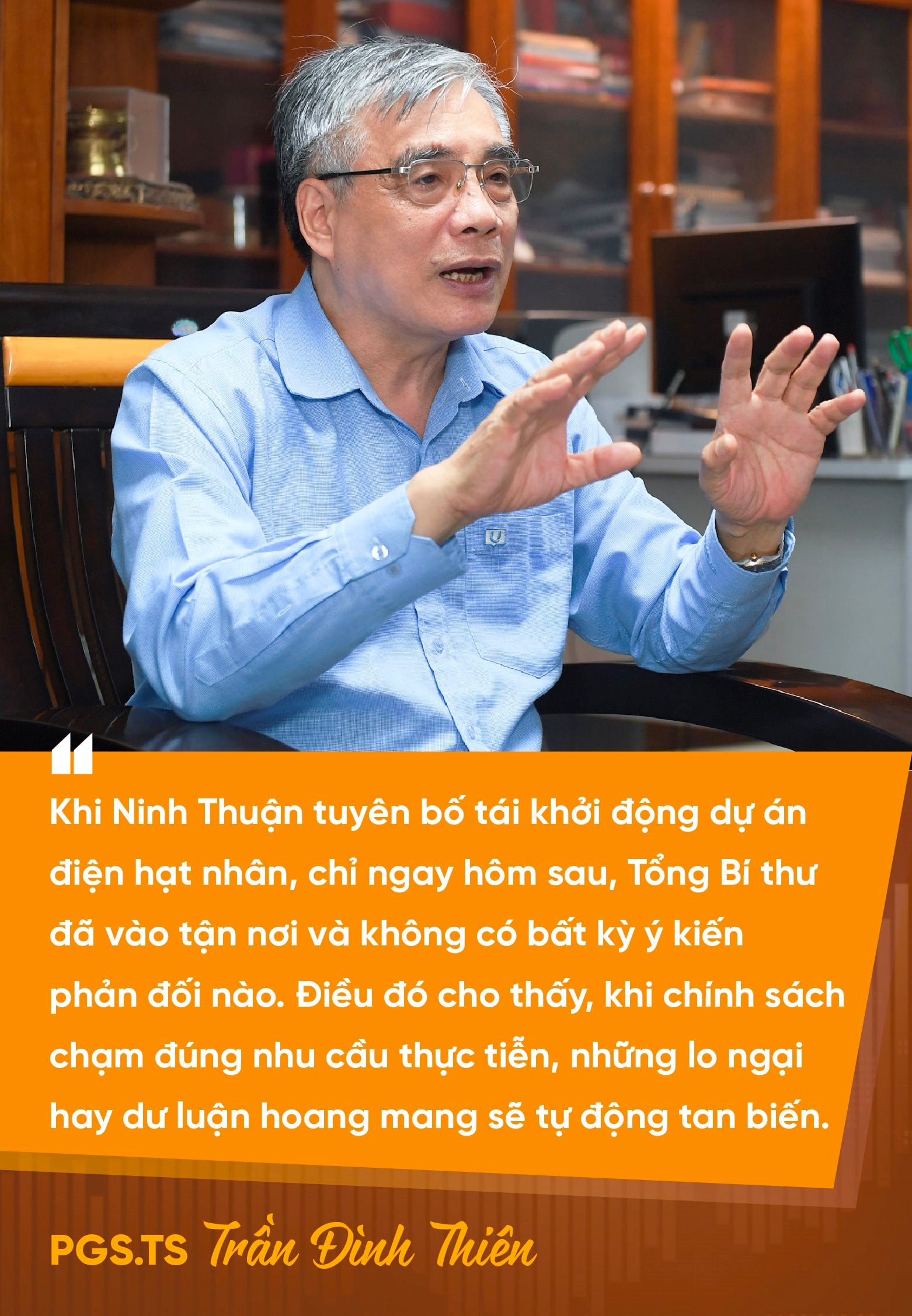
Mr. Thien cites another example, the Ca Na port – a “treasure” of Vietnam. With its ideal depth and minimal siltation, the port is well-suited to become an international cargo transshipment hub where global vessels can call to transfer goods.
Additionally, Ninh Thuan is shaping a unique path by simultaneously leveraging its specific advantages. Mr. Thien assesses that in the coming time, when Ninh Thuan merges with Khanh Hoa, effectively connecting and harnessing the advantages of deep-sea ports, tourism potential, and renewable energy, the “advantages can be said to be unmatched.”

The case of Ninh Thuan is not an isolated one. PGS.TS Tran Dinh Thien mentions Quang Binh, once considered a land of “poisonous forests and venomous waters,” where the scorching Lo winds, barren sandy soil, and limestone mountains were associated with diseases. Quang Binh seemed to have little chance of development.
However, when approached from a different perspective, the idea of “cave tourism” emerged, transforming its wilderness into a brand. Once-forgotten caves like Son Doong have become world-class tourist attractions. Sand, sun, and wind, once obstacles to production, now favor the development of solar and wind power and ecological tourism.

“The key lies in changing our mindset and daring to view disadvantages from a different angle. If approached correctly, weaknesses can become strengths, and policies must change accordingly,” Mr. Thien analyzes.
However, not all localities have the courage to choose a different path, especially when the institutional framework is restrictive, and investors remain cautious.
”
Not all localities dare to be different, but if they do, the advantage will be ‘unmatched,'” he emphasizes.
The common thread among Binh Duong, Ninh Thuan, and Quang Binh is their pioneering spirit. They dare to propose unique models and lead the way without precedent, thereby gaining a competitive edge. In this transformative phase, change is needed not only in policies but also in how we perceive development models.
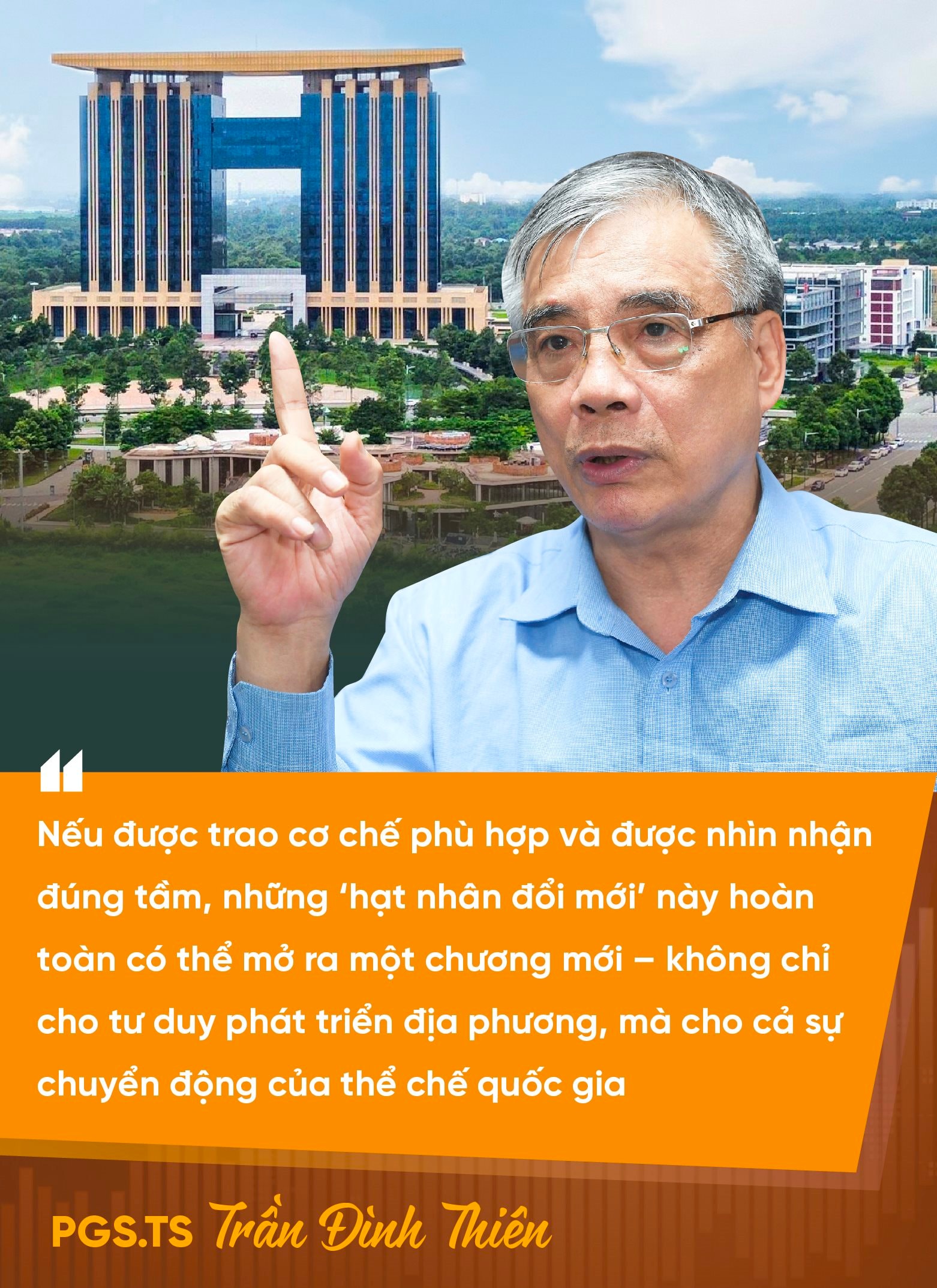
“Models like Ninh Thuan and Binh Duong reflect not just local efforts but also the aspiration to rise above seemingly impossible conditions. If granted appropriate mechanisms and recognized for their true potential, these ‘innovation nuclei’ can usher in a new chapter – not just for local development thinking but also for the evolution of the national institutional framework,” concludes PGS.TS Tran Dinh Thien.
The Nation’s Mega Projects Need Private Enterprise ‘On Board’
“As Vietnam embarks on a new era of national advancement, Minister of Planning and Investment Nguyen Chi Dung emphasizes the crucial role of large private enterprises in spearheading key national projects. These ventures include the ambitious North-South high-speed railway, urban rail systems, renewable energy initiatives, and offshore wind power developments. The participation of robust private enterprises in these endeavors is vital for the nation’s progress and its aspirations for a brighter future.”

